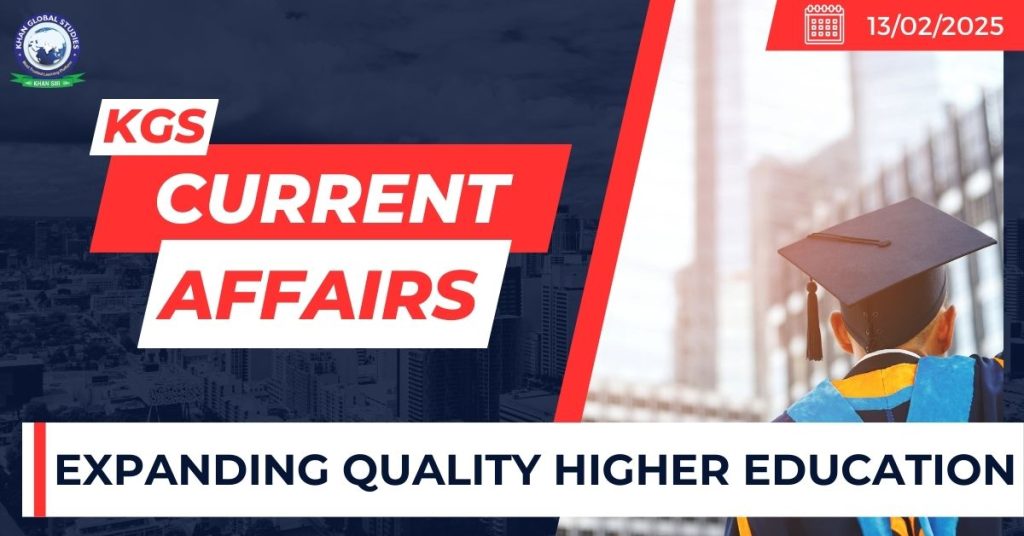Context:
Recently, NITI Aayog launched a policy report titled ‘Expanding Quality Higher Education through States and State Public Universities’.

About the report:
- The report is a first-of-its-kind policy document in the higher education sector, focused specifically on States and State Public Universities (SPUs).
- It provides a detailed quantitative analysis of vital indicators of Quality, Funding and Financing, Governance and Employability over the last decade across the themes.
Key Highlights of the report:
Top Spenders on Education (Percentage of GDP):
- Jammu and Kashmir spend the most on education as a percentage of GDP (8.11%).
- Other top spenders include Manipur (7.25%), Meghalaya (6.64%), and Tripura (6.19%).
Lower Spending States:
- Delhi (1.67%), Telangana (2%), and Karnataka (2.01%) allocate less for higher education.
State Budgets for Higher Education:
- Maharashtra has the largest budget for higher education at ₹11,421 crore, followed by Bihar (₹9,666 crore) and Tamil Nadu (₹7,237 crore).
- States like Sikkim, Arunachal Pradesh, and Nagaland have the smallest budgets (under ₹200 crore).
‘Higher Education Expenditure’ as a percentage of GSDP:
- Bihar spends the highest percentage (1.56%) of its GSDP on higher education, followed by Jammu & Kashmir (1.53%) and Manipur (1.45%).
- Telangana spends the least at 0.18%, and Gujarat and Rajasthan allocate 0.23%.
University Density:
- The national average university density (number of colleges or universities per 1 lakh eligible students) is 0.8.
- Sikkim has the highest university density (10.3), while Bihar has the lowest (0.2).
Female Enrollment:
- Kerala, Chhattisgarh, and Himachal Pradesh have more women than men enrolling in higher education.
- Smaller states like Chandigarh, Mizoram, and Andaman & Nicobar Islands have nearly equal male-female enrollment.
Key Challenges
- There is insufficient funding for research and development, especially in State Public Universities (SPUs).
- Education in India is more focused on memorization rather than developing critical thinking and innovation skills.
- India ranks poorly in global research publications and patents.
- The curriculum is outdated and doesn’t match the needs of modern industries.
- Many universities have vacant teaching positions, with over 40% of faculty roles unfilled.
- Recruitment of qualified faculty is delayed due to unresolved recruitment rules.
- Many SPUs lack the necessary infrastructure like labs, digital resources, and libraries.
Key Recommendation
- The report suggests nearly 80 policy changes to improve four key areas of SPUs: education quality, funding, governance, and student employability.
- The report recommends that both the Central and State governments should increase their combined spending on education to 6% of GDP, as suggested in the National Education Policy (NEP) 2020.
- It suggests increasing investment in research and development (R&D), both public and private, to 2% of GDP, as recommended in the Economic Survey of 2017-18.
- SPUs should form groups to focus on 2-3 local issues and create Centres of Excellence to solve these problems.
- States may consider setting up a financial agency similar to the Higher Education Financing Agency (HEFA) to specifically support SPUs.

